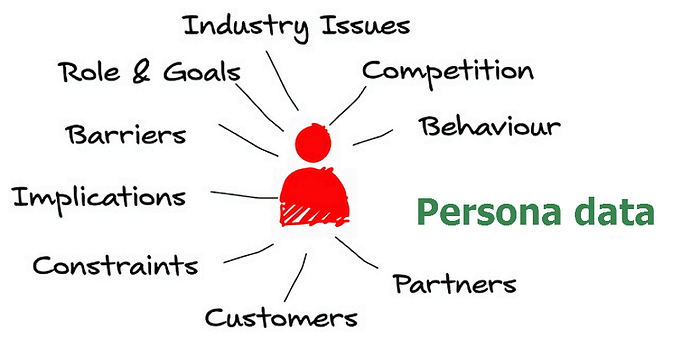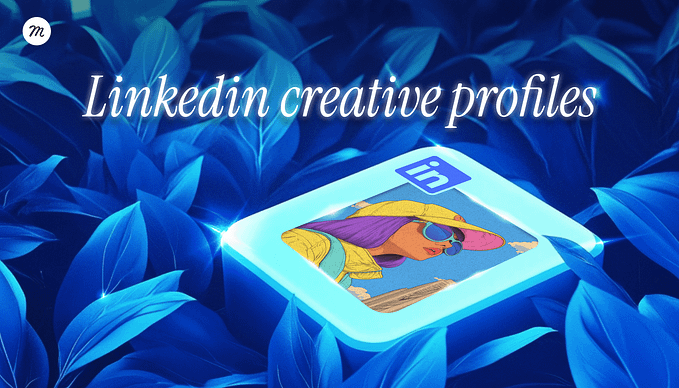What are & How to Create Personas: Step-by-Step Guidelines of Everything
Before starting a product design, it is very important to know clearly the demands of users. Taking into account the needs of users can help determine how the product will fit the conventional requirements of users of different fields and ages and with unequal contexts, meanwhile to help the function design. Creating Personas is a good way to achieve this goal. Software development pioneer Alan Cooper had created the first Persona with his colleagues in the 80’s. In this article, we’ll talk about how to create Personas through 7 sections.

1. What is a Persona?
- The Persona definition is that one or several fictional characters that can represent the majority of the potential users of product with conventional user demands and they are created through a great amount of quantitative and qualitative research. Persona answers the question “Who do we design for?” It is a powerful tool based on research findings in helping product function creation by optimizing the UX research and it not only represents a specific user but all of them, it can be understood as a typical character of the behavior, attitude, skills and contexts of all potential users.
2. Why we use Personas?
Numerous research data for product design are quite difficult to handle, especially when we need to pay attention to the data throughout the entire process. Therefore, Persona will be a relatively more realistic and concrete object, although not a real person, it is the most typical image of many real Personas. And it can remind us of the users’ needs and help us make a better user experience model because of which real users will feel more comfortable while using product. This is why it can facilitate the development.
3. The classification of Persona
Personas can be classified into 2 types in general: Marketing Persona and Design Persona.
1. Marketing Personas are typical characters of the customers of a product or a company, they have similarities in buying preference, social relations, mode of consumption and ages. Personas help the company determine how their customers will be;
2. Design Personas (For example the User Personas and the UX Personas) refer to the representatives of users of a product or service that have similar points in usage customs, product requirements, preferences and goals. They can describe the needs of potential users and help developers put their focus back on users during the function design, and make products conform to user requirements.
4. The value and functions of Personas
1. Examination of the comprehension about users: The more the design group knows about their users, the more users need their products
2. Users centered: Personas demonstrate the goals and requirements of users: the axis of the work for UX design group, which will make the first version of product come with better usability design;
3. To avoid conflict: With Personas, when appears conflict of design, the design group can adept their decision based on the model.
4. Management control: Personas can help the group develop the most useful functions instead of designing functions that will never be used. And avoid the usual situation that developers misunderstand what users want because there is the difference between what they say and do.
5. Prediction of user behavior: Taking advantage of Personas can predict the needs, behavior and possible reactions of users, that is why they can reduce the use of the usability exam.
6. Design ranking adjusts: Personas will help the product team figure out the most important design element.
7. Time-saving: Personas is a way to replace some traditional user demands research method.

5. How to create Personas?
1. Determine method of research
The first step is to find out who are potential costumers o users, what we must do now is not to imagine from nothing but to do researches of people of different fields, ages, educational levels, genres, etc. The normal research methods are a questionnaire, on-line or off-line, and face-to-face interviews. Questionnaire is faster and it can collect more data, but abstract. Interviews take more time but information will be fertile. There is no need to do interview with people one by one, it can be similar to the technique called Discussion Group (Grupo de Discusión) used in social science research: Divide all interviewees into small groups of 6 to 12 members and let them talk freely about the topics offered by the organizers, while the organizers note down the words and concrete ideas of the interviewees without interrupting their speeches, after that keep the notes with the personal data. Meanwhile, information from quantitative researchers as data support is also needed.
2. Finding users
The design group or the product group can make questions or offer topic they need about information to determine who is their user in the interviews. And with all the work done in the anterior part, they should analyze data obtained to find who are users and how many they are.
3. Hypotheses building
In this part, the main work is to find the difference between all the potential users based on the research conclusions. After noting down what is the difference, it’s necessary to make hypotheses of why there are these inequalities between those potential users. After that to make an abstract image of a certain kind of potential users.
4. Verifications
Works required are: to find out what the Persona would like and dislike and his interior demands, how would be the situation in which the Persona will use the product, etc.
5. User patterns
By classification of the information achieved through anterior parts, the group now is able to check if members have found the correct user etiquette. And with the minor database to determine if there is any other kind of potential user and their demands. Question: Is the minor part of the same importance?
6. The foundation of Persona data
As mentioned at the beginning of this article, Persona is a concrete model of the typical image of potential clients, we need to add more descriptions to enrich the image of the Persona. The descriptions are made based on the data obtained, at the same time we have to assume more personal information for it such as identity, sex, its work and everyday customs that can influence the use of the product. So with the whole process, in the end, the Persona can participate in the design process and with its existence, the group can throw questions closer to the users’ ideas such as “What would the Persona think about …” and “What would you think about this function?”
7. Usage scenarios design
At the end of the establishment of a Persona, we need to design some scenarios in which the Persona has needs to use the product to create a more plausible environment.

8. Characteristics of a good Persona
A good Persona can offer support to the group in the UX research and the final destination is to create a product with great UX. Besides, with the foundation of Personas, the group can react more quickly when user requirements change. A professional and fast prototyping tool also help the design group to create an outstanding prototype with well-designed UX. But Persona should be able to lead the group to optimize the function design throughout the entire development. That is why the combination of both parties can greatly promote product design and this function will be sustainable. However, the creation of a good Persona is not simple, its characteristics are
1. Sufficiently reflect the data and conclusions of investigations;
2. Show the current state of the interviewees instead of their expectation of the future;
3. Be more realistic than idealistic;
4. Propose a challenge to the group (but it is not impossible);
5. Help the group understand the users better.
9. Key Points When Creating Personas
Persona also has their limits, for example, because of its characteristic of being created according to the needs of users, it cannot reflect the attractive quality of users, and when it is not typical enough the data of Persona, it can deviate the design direction. This is the point that deserves a lot of attention when creating User Personas.
In the end, there is not just one resolution for the UX research in product development, to create Persona is one of them. If the group needs and decides to create their own Personas, they have to think about how to create Personas with a more typical and credible user image and let them participate in all development. In addition, accumulating more knowledge about the user phycology is also one of the designers’ faculties. Through this article, readers must understand well how to create Personas of their own and integrate this technique in their work in the future to improve the user experience of products.










